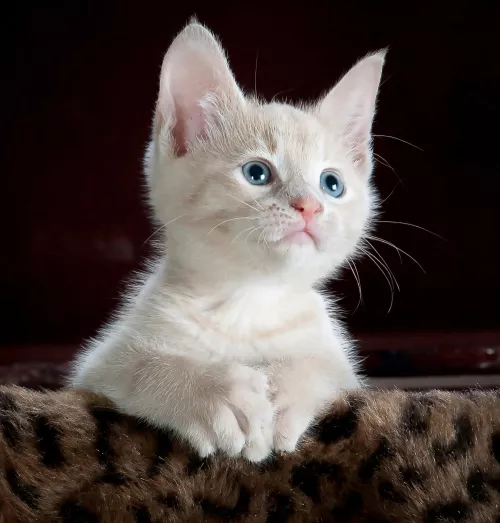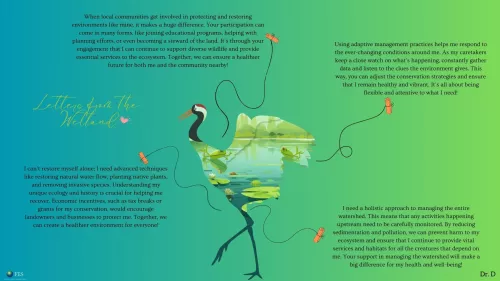TreeHugger is one of the most well-known sites for green living tips and environmental news. They cover everything from eco-friendly products to the latest scientific findings on climate change.
With the increasing problem of waste management, recycling is the best way to minimize the effects of the world’s pollution. Governments across the globe are now increasing their recycling efforts to help cut waste, save resources, and fight pollution. The best practices in recycling range from top-notch approaches and strategies to grassroots initiatives and thus the most successful recycling programs present useful lessons for the countries that seek to enhance their performance in waste management. In this blog, we will look at some of the most successful cases of recycling programs around the globe and how we can apply these experiences for making the world a better place to live in terms of environmental conservation.
With the increasing problem of waste management, recycling is the best way to minimize the effects of the world’s pollution. Governments across the globe are now increasing their recycling efforts to help cut waste, save resources, and fight pollution. The best practices in recycling range from top-notch approaches and strategies to grassroots initiatives and thus the most successful recycling programs present useful lessons for the countries that seek to enhance their performance in waste management. In this blog, we will look at some of the most successful cases of recycling programs around the globe and how we can apply these experiences for making the world a better place to live in terms of environmental conservation.

Most people have a basic idea of what species are, even if they are not sure of the best way to define the word species. Quite simply, species are kinds, or types, of organisms. For example, humans all belong to one species (the scientific name of our species is Homo sapiens), and we differ from other species, such as gorillas or dogs or dandelions. But defining, identifying, and distinguishing between species really isn't that simple. In fact, it is often a complex and difficult process-especially in cases of new or previously unknown species. Biologists frequently disagree about species, and even argue over how best to define the word species. This disagreement is so well known, and so much discussed, that it is sometimes referred to by biologists as the "species problem" (Hey 2001).
This article explores the idea of species, including both the meaning of the word species, and how biologists think species can be identified in nature. It also examines why an understanding of species is important, both for the study of biology and for our society.
Why Are Species So Confusing?
The central difficulty when studying species is that, even though all species are kinds of organisms, all kinds of organisms are not species. For example, birds are a kind of organism, but birds are not a species --there are many thousands of species of birds. For scientific purposes, it is not enough to identify a kind of organism. As a biologist you must also determine what level or rank of kind to assign to an organism. If you discover a new kind of organism then you must decide if it should be called a new species, or if it falls within an already described species. For example, the common chimpanzee species, Pan troglodytes, appears to include several slightly different kinds of chimpanzees. Each of these have been given the rank of sub-species. Alternatively, a newly discovered kind of organism might be so different from other known species that it receives not only a designation as a new species but also a ranking as a new genus.

Most people have a basic idea of what species are, even if they are not sure of the best way to define the word species. Quite simply, species are kinds, or types, of organisms. For example, humans all belong to one species (the scientific name of our species is Homo sapiens), and we differ from other species, such as gorillas or dogs or dandelions. But defining, identifying, and distinguishing between species really isn't that simple. In fact, it is often a complex and difficult process-especially in cases of new or previously unknown species. Biologists frequently disagree about species, and even argue over how best to define the word species. This disagreement is so well known, and so much discussed, that it is sometimes referred to by biologists as the "species problem" (Hey 2001).
This article explores the idea of species, including both the meaning of the word species, and how biologists think species can be identified in nature. It also examines why an understanding of species is important, both for the study of biology and for our society.
Why Are Species So Confusing?
The central difficulty when studying species is that, even though all species are kinds of organisms, all kinds of organisms are not species. For example, birds are a kind of organism, but birds are not a species --there are many thousands of species of birds. For scientific purposes, it is not enough to identify a kind of organism. As a biologist you must also determine what level or rank of kind to assign to an organism. If you discover a new kind of organism then you must decide if it should be called a new species, or if it falls within an already described species. For example, the common chimpanzee species, Pan troglodytes, appears to include several slightly different kinds of chimpanzees. Each of these have been given the rank of sub-species. Alternatively, a newly discovered kind of organism might be so different from other known species that it receives not only a designation as a new species but also a ranking as a new genus.

Most people have a basic idea of what species are, even if they are not sure of the best way to define the word species. Quite simply, species are kinds, or types, of organisms. For example, humans all belong to one species (the scientific name of our species is Homo sapiens), and we differ from other species, such as gorillas or dogs or dandelions. But defining, identifying, and distinguishing between species really isn't that simple. In fact, it is often a complex and difficult process-especially in cases of new or previously unknown species. Biologists frequently disagree about species, and even argue over how best to define the word species. This disagreement is so well known, and so much discussed, that it is sometimes referred to by biologists as the "species problem" (Hey 2001).
This article explores the idea of species, including both the meaning of the word species, and how biologists think species can be identified in nature. It also examines why an understanding of species is important, both for the study of biology and for our society.
Why Are Species So Confusing?
The central difficulty when studying species is that, even though all species are kinds of organisms, all kinds of organisms are not species. For example, birds are a kind of organism, but birds are not a species --there are many thousands of species of birds. For scientific purposes, it is not enough to identify a kind of organism. As a biologist you must also determine what level or rank of kind to assign to an organism. If you discover a new kind of organism then you must decide if it should be called a new species, or if it falls within an already described species. For example, the common chimpanzee species, Pan troglodytes, appears to include several slightly different kinds of chimpanzees. Each of these have been given the rank of sub-species. Alternatively, a newly discovered kind of organism might be so different from other known species that it receives not only a designation as a new species but also a ranking as a new genus.

Most people have a basic idea of what species are, even if they are not sure of the best way to define the word species. Quite simply, species are kinds, or types, of organisms. For example, humans all belong to one species (the scientific name of our species is Homo sapiens), and we differ from other species, such as gorillas or dogs or dandelions. But defining, identifying, and distinguishing between species really isn't that simple. In fact, it is often a complex and difficult process-especially in cases of new or previously unknown species. Biologists frequently disagree about species, and even argue over how best to define the word species. This disagreement is so well known, and so much discussed, that it is sometimes referred to by biologists as the "species problem" (Hey 2001).
This article explores the idea of species, including both the meaning of the word species, and how biologists think species can be identified in nature. It also examines why an understanding of species is important, both for the study of biology and for our society.
Why Are Species So Confusing?
The central difficulty when studying species is that, even though all species are kinds of organisms, all kinds of organisms are not species. For example, birds are a kind of organism, but birds are not a species --there are many thousands of species of birds. For scientific purposes, it is not enough to identify a kind of organism. As a biologist you must also determine what level or rank of kind to assign to an organism. If you discover a new kind of organism then you must decide if it should be called a new species, or if it falls within an already described species. For example, the common chimpanzee species, Pan troglodytes, appears to include several slightly different kinds of chimpanzees. Each of these have been given the rank of sub-species. Alternatively, a newly discovered kind of organism might be so different from other known species that it receives not only a designation as a new species but also a ranking as a new genus.

Once upon a time, in the heart of a vibrant and diverse land called Bharat, there existed a precious treasure known as the Wetlands. They were a mosaic of life, with shimmering waters reflecting the clear blue skies, tall grasses swaying gently in the breeze, and lotus flowers blooming in vibrant hues of pink and white. Birds, from the majestic herons to the playful kingfishers, made their homes among the reeds. Fish darted through the clear waters, and frogs croaked harmoniously. They provided a home for countless creatures, purified the water, and protected the land from floods. Their beauty and importance were undeniable.
Nothing could go wrong with them however they had their anguish, these Wetlands were like everyone's baby—cherished, admired, and essential to the well-being of the entire kingdom and despite their significance, the Wetlands were not mothered well. The people of the kingdom often took them for granted. They marvelled at the lush greenery and the vibrant life that thrived within, but they failed to nurture and protect these delicate ecosystems. Pollution, encroachment, and neglect began to take their toll.
Factories along the riverbanks released toxic chemicals into the waters, turning them murky and harmful to aquatic life. Plastic waste and other debris clogged the waterways, suffocating the plants and animals that depended on the Wetlands for survival. Urban development encroached upon these natural sanctuaries, reducing their size and disrupting the delicate balance of the ecosystem.
The Wetlands cried out for help, their once-clear waters turning murky and their vibrant flora and fauna struggling to survive. The wise elders of the kingdom knew that something had to be done. They gathered the people and shared stories of the past, reminding them of the Wetlands' crucial role in their lives.
Upon hearing the cries for help, the King took action and summoned his most respected ministers and strategists. Together, they sought innovative solutions to support and restore the wetlands. As news of their efforts spread, researchers and environmentalists began to take note of the wetlands, conducting studies and raising awareness about their importance. This increased attention brought a renewed sense of hope for the wetlands, inspiring the community to rally together for their protection and restoration.
The wetlands once brimmed with hope, but that light began to fade as the king grew consumed by his other duties. The ministers, too, drifted back to their routines, and one by one, they abandoned the wetlands, leaving them alone and forgotten. Occasionally, a kind soul would wander into the wetlands, heart heavy with compassion, determined to help. Reports of their plight were documented, yet those words faded into the void, lost and unheeded, as the wetlands waited in vain for the care and attention they so desperately needed!
They are still waiting for someone to read the reports and take meaningful action based on their findings. The empty promises and words of reassurance are no longer sufficient to address their concerns. Without prompt intervention, their situation remains unchanged, and the urgency for real solutions continues to grow.
Happy International Wetland’s Day 2025!
🌻
Dr.D